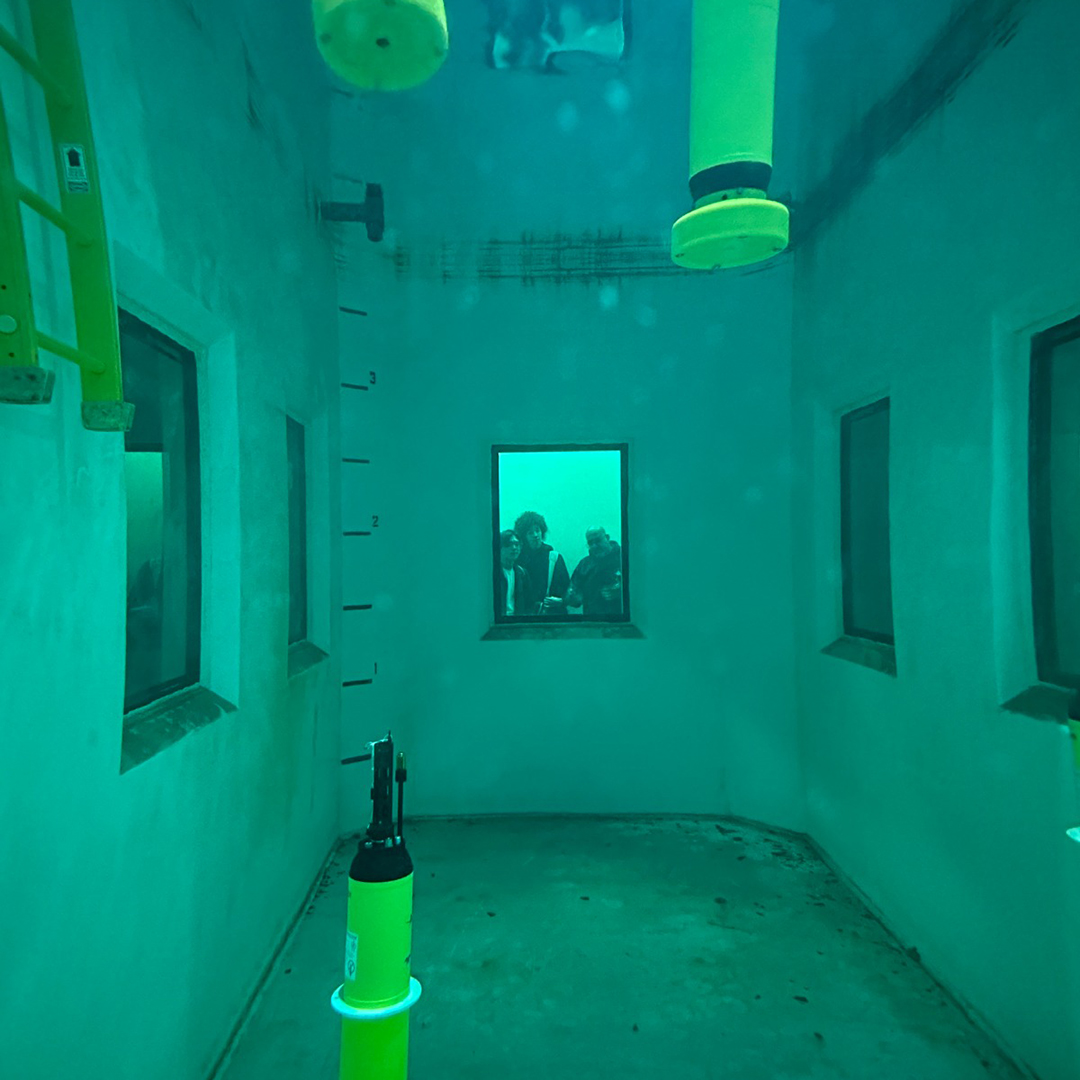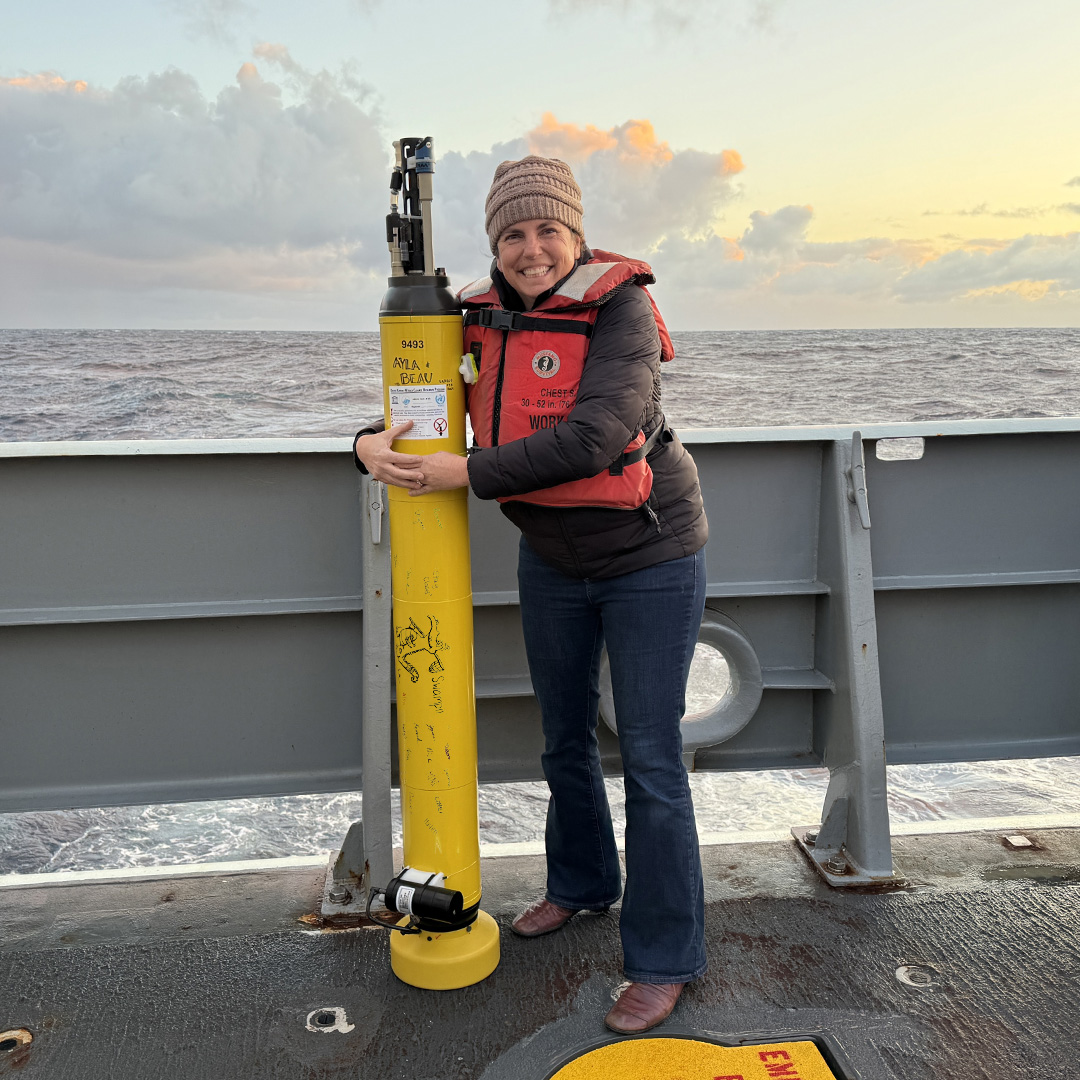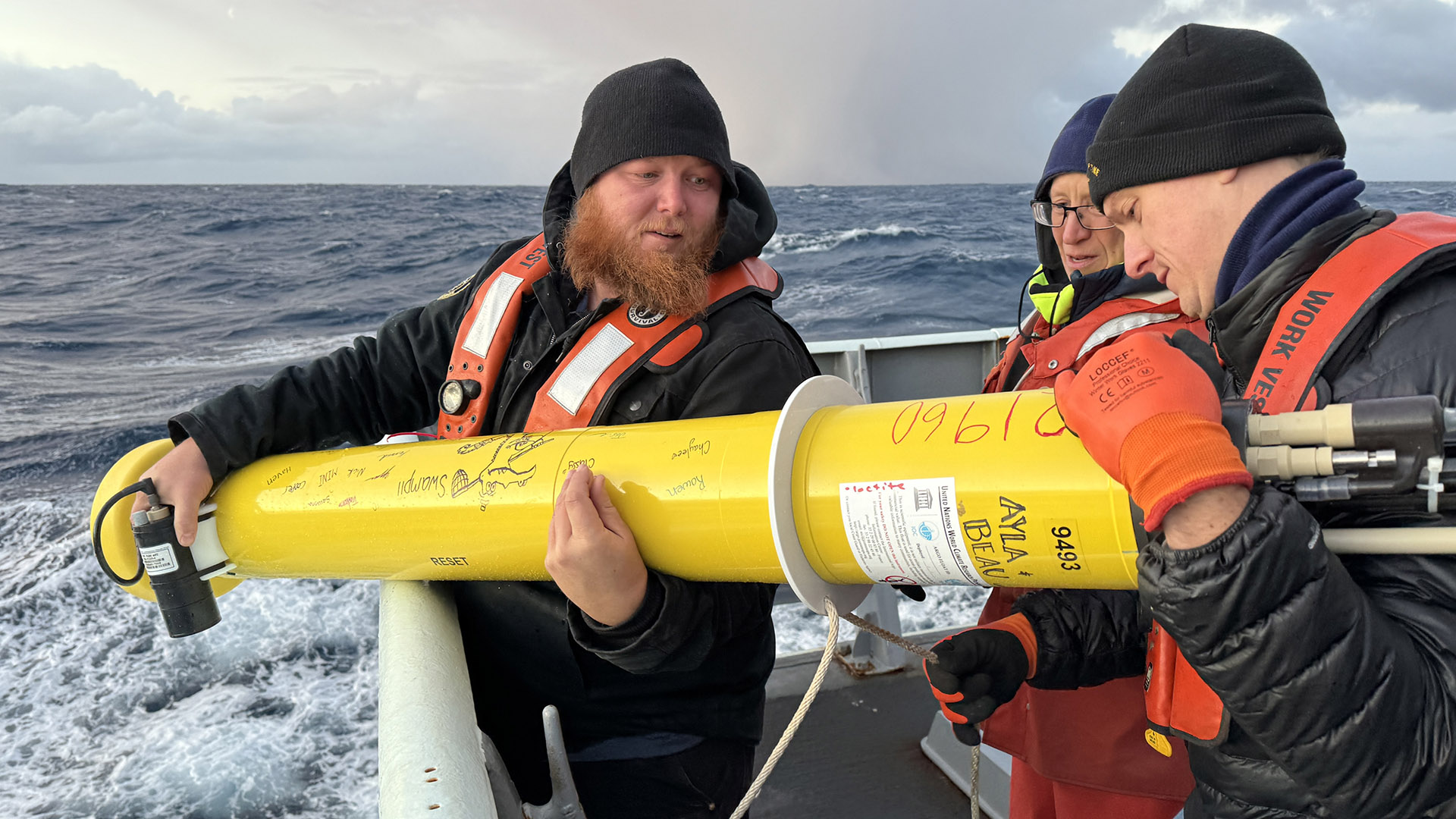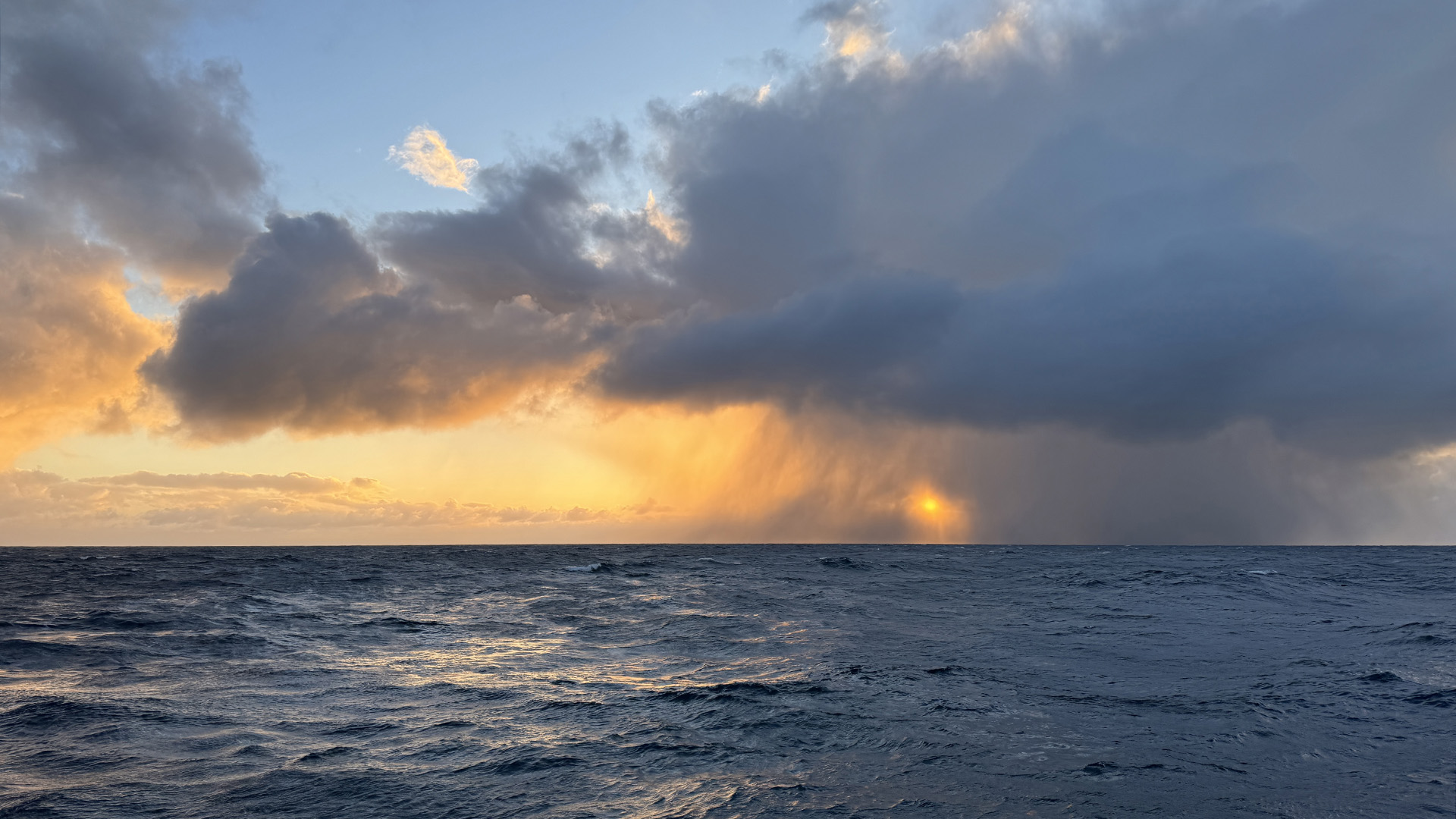Swampii sets sail
Our fourth float, Swampii has been deployed in the Southern Ocean
Swampii— Maritime High School; Des Moines, WA
Location: 53° 30′ 42.84” S; 87° 2′ 26.88” E
Time: Sat 16 MAR 2024 12:30 UTC
Temperature: 3.0°C, Wind 22 kts SW
Float Number: 21960
Float Type: Apex
Float Program: SOCCOM
This float was adopted by Maritime High School in Des Moines, WA and named “Swampii.” The ROV Club is going to be tracking and analyzing the data.
Being local to Seattle, where the Apex floats are built by the University of Washington Float Lab, the students who adopted Swampii were lucky enough to get to visit the float while it was still in the lab and decorate it themselves! Float engineer Rick Rupan gave them a lab tour and answered any questions they had about the floats. They even got to see the floats in action in the test tank!

Rick Rupan gives students a tour of the float lab at UW. Photo by Joanna Rodriguez.

Students watch through a viewing window as the floats are tested in the tank at UW. Photo by Joanna Rodriguez.
Swampii was deployed in the late afternoon light, just as the sunset peeked out between storms. The swells were still pretty high—a residual effect of all of the storms that roll through this area of the ocean. The deployment team did a great job of getting the float in quickly and smoothly so it could begin its sampling journey.

Swampii is ready to deploy.

Team work makes the dream work!

Swampii is lifted carefully over the edge during deployment.
Even if you can’t take your class to the float lab yourself, there are lots of resources on our website to help introduce the floats to your class. There’s a detailed float diagram, with original artwork by Karen Romano Young, designed to be printed out on tabloid size paper 11×17. This diagram provides a peek inside a float to see all of the sensors, controllers, batteries, weights, and the buoyancy engine. There’s also a one-page introduction to floats that students can use as background reading. There are videos that give students a better understanding of what the floats do, as well as an opportunity to see them in action in the test tank. You can find all of this and more on the “For Educators” page on the Adopt-a-Float website!
All images by Jennifer Magnusson unless otherwise noted.

Another momentary shower veils the sunset over the Southern Ocean.
